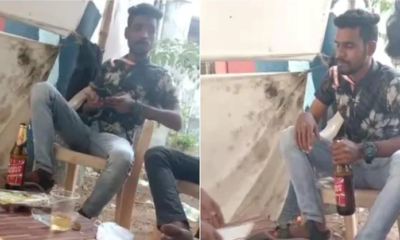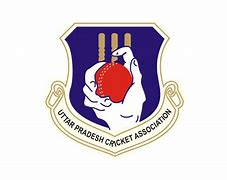Feature
‘Robot-assisted surgeries’, India emerging as top hub

 New Delhi:Reasonable costs, less pain, early recovery and increasing awareness have put India on the global map when it comes to robot-assisted surgeries across the health spectrum and the country is poised to take a leap soon, some of the leading robotic surgeons have said.
New Delhi:Reasonable costs, less pain, early recovery and increasing awareness have put India on the global map when it comes to robot-assisted surgeries across the health spectrum and the country is poised to take a leap soon, some of the leading robotic surgeons have said.
According to the latest data from hospitals, Mumbai recorded over 70,000 robotic surgeries in 2015 — mostly on patients from abroad. Delhi and Bengaluru have performed nearly 20,000 and 25,000 robotic surgeries, respectively.
More specifically, patients from the Middle East and Africa appear to be making a beeline for robot-assisted surgeries in India because either they do not have advance robotic surgery facilities in their home country or, if available, its very expensive.
“I get at least one to two inquiries for robotic surgeries every week. These inquiries are usually from the Middle East and Africa. In the last two months alone, I had operated on seven patients with prostate cancer from out of India,” Dr Anup Ramani, consultant robotic and uro-oncological surgeon from Saifee Hospital and Breach Candy Hospital, Mumbai, told IANS.
Dr Ramani said that for early prostate cancer the best treatment is through robotic surgery. In India, prostate cancer has seen a sharp rise and it affects the rich and the poor alike. “It is very important for men to do a prostate specific antigen (PSA) test once a year after 50,” Dr Ramani said.
In New Delhi, Dr Vipin Tyagi, consultant urologist and robotic surgeon in Sir Ganga Ram Hospital, successfully performed robotic surgery recently on a four-year-old girl suffering from congenital grade 5 bilateral Vesico Ureteric Reflux (VUR), a disease in which urine starts going back from bladder to kidneys.
“She was having high fever with recurrent urinary tract infection since birth and was brought to Sir Gangaram Hospital. Tests confirmed that she had VUR,” Dr Tyagi said.
The parents wanted to avoid any big incision in the little girl and it was not easy to do minimally-invasive surgery either. “We decided to go in for robot-assisted bilateral ureteric reimplantation. The use of big robot, especially for VUR, is uncommon in children because it is difficult to get working space for the robotic arm inside the abdomen of a small child,” the doctor said.
The team then decided to make certain modifications and improvisation for docking of the robotic arms in the way to get just sufficient working space for the procedure. The girl was back home after two days. Follow-up scans and reports showed the VUR had been cured.
“Robotic assistance provides incomparable 3D vision, better range of movements and it seems as if the surgeon has introduced his wrist inside the abdomen of the patients,” Dr Tyagi explained.
According to Dr Meghal Sanghvi, oncologist at Wockhardt Hospital, the setup for robotic surgery is very important for all hospitals considering the rising demands for it in various parts including bypass surgery, transplants, cancer and gynae procedures.
“Apart from less time, robotic surgery also ensures there is no surgical error during the process,” she noted. Further, the cost is only marginally higher than a normal procedure.
According to Dr Chris Holsinger, 48, who leads Stanford Cancer Centre’s Head and Neck Oncology practice and has been interacting closely with leading Indian counterparts since 2008, India has significant talent and expertise in performing robot-assisted surgeries for head and neck patients.
“The use of computer-assisted surgery (via a surgical robot) to remove cancerous tissues or tumours in the head and neck areas helps the surgeon see the affected areas far more clearly – which is not possible in open surgery,” Holsinger, who was recently in India to attend a seminar on head and neck cancer, told IANS.
The Stanford Medical Center is working with leading oncologists with Indian health care providers like Delhi’s Rajiv Gandhi Cancer Institute and Research Centre (RGCIRC) and Mumbai’s Tata Memorial Cancer Hospital for study of Human Papilloma Virus (HPV) patients.
Dr Surender Dabas from RGCIRC says the minimally invasive surgical procedure for head and neck area allows access to the robot through the mouth, thus reducing trauma, pain and blood loss. “Best of all, the procedure does not leave any scars on the face or neck and the recovery is much quicker,” said Dr Dabas.
Entertainment
Meghalaya Reserves Legalized Gambling and Sports Betting for Tourists

The State Scores Extra High on Gaming-Friendly Industry Index
Meghalaya scored 92.85 out of 100 possible points in a Gaming Industry Index and proved to be India’s most gaming-friendly state following its recent profound legislation changes over the field allowing land-based and online gaming, including games of chance, under a licensing regime.
The index by the UK India Business Council (UKIBC) uses a scale of 0 to 100 to measure the level of legalisation on gambling and betting achieved by a state based on the scores over a set of seven different games – lottery, horse racing, betting on sports, poker, rummy, casino and fantasy sports
Starting from February last year, Meghalaya became the third state in India’s northeast to legalise gambling and betting after Sikkim and Nagaland. After consultations with the UKIBC, the state proceeded with the adoption of the Meghalaya Regulation of Gaming Act, 2021 and the nullification of the Meghalaya Prevention of Gambling Act, 1970. Subsequently in December, the Meghalaya Regulation of Gaming Rules, 2021 were notified and came into force.
All for the Tourists
The move to legalise and license various forms of offline and online betting and gambling in Meghalaya is aimed at boosting tourism and creating jobs, and altogether raising taxation revenues for the northeastern state. At the same time, the opportunities to bet and gamble legally will be reserved only for tourists and visitors.
“We came out with a Gaming Act and subsequently framed the Regulation of Gaming Rules, 2021. The government will accordingly issue licenses to operate games of skill and chance, both online and offline,” said James P. K. Sangma, Meghalaya State Law and Taxation Minister speaking in the capital city of Shillong. “But the legalized gambling and gaming will only be for tourists and not residents of Meghalaya,” he continued.
To be allowed to play, tourists and people visiting the state for work or business purposes will have to prove their non-resident status by presenting appropriate documents, in a process similar to a bank KYC (Know Your Customer) procedure.
Meghalaya Reaches Out to a Vast Market
With 140 millions of people in India estimated to bet regularly on sports, and a total of 370 million desi bettors around prominent sporting events, as per data from one of the latest reports by Esse N Videri, Meghalaya is set to reach out and take a piece of a vast market.
Estimates on the financial value of India’s sports betting market, combined across all types of offline channels and online sports and cricket predictions and betting platforms, speak about amounts between $130 and $150 billion (roughly between ₹9.7 and ₹11.5 lakh crore).
Andhra Pradesh, Telangana and Delhi are shown to deliver the highest number of bettors and Meghalaya can count on substantial tourists flow from their betting circles. The sports betting communities of Karnataka, Maharashtra, Uttar Pradesh and Haryana are also not to be underestimated.
Among the sports, cricket is most popular, registering 68 percent of the total bet count analyzed by Esse N Videri. Football takes second position with 11 percent of the bets, followed by betting on FIFA at 7 percent and on eCricket at 5 percent. The last position in the Top 5 of popular sports for betting in India is taken by tennis with 3 percent of the bet count.
Local Citizens will Still have Their Teer Betting
Meghalaya residents will still be permitted to participate in teer betting over arrow-shooting results. Teer is a traditional method of gambling, somewhat similar to a lottery draw, and held under the rules of the Meghalaya Regulation of the Game of Arrow Shooting and the Sale of Teer Tickets Act, 2018.
Teer includes bettors wagering on the number of arrows that reach the target which is placed about 50 meters away from a team of 20 archers positioned in a semicircle.
The archers shoot volleys of arrows at the target for ten minutes, and players place their bets choosing a number between 0 and 99 trying to guess the last two digits of the number of arrows that successfully pierce the target.
If, for example, the number of hits is 256, anyone who has bet on 56 wins an amount eight times bigger than their wager.























